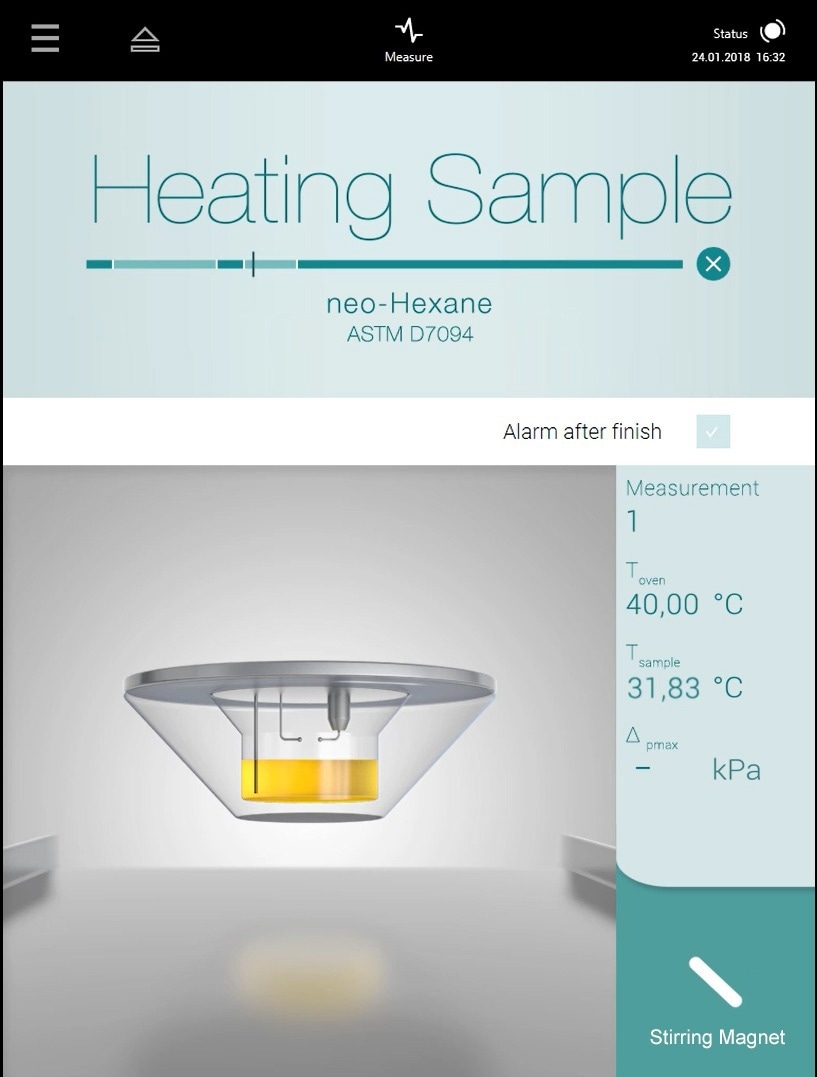It is important to measure the flashpoint of waste liquids on waste disposal plants so as to categorize the liquids for the combustion process. Similar to the transport regulations, the restrictions are 21 °C and 38 °C, which are the limits of the Austrian waste disposal plant.
The samples are paints, oils, varnishes, pure liquids, and a number of different mixtures with extremely flammable components. As a result of the composition of these samples, the flashpoint range is wide but in a majority of cases it is just below 40 °C. Thus, the MINIFLASH FLPL is the ideal unit for this application.

Image credit: Grabner Instruments
MINIFLASH Versus PM
In most circumstances, a flashpoint tester is already available (typically a PM). As a result of the large sample volume and laborious cleaning of the tester, the MINIFLASH is the perfect choice because it requires a sample volume of only 1 mL and enables easy and quick cleaning. Moreover, the cooling time of the Abel Pensky or Pensky Martens is quite lengthy because of the large sample volume. The entire measuring time for flashpoint measurements below ambient temperature is about five times faster with the MINIFLASH.
Problem
When the waste is sent to the plant, it is not cooled and therefore, extremely volatile and flammable components can evaporate. That means that the flashpoint measurement is not very reproducible, particularly when the sample is kept in ambient temperature over prolonged time periods. Thus, comparison measurements must be carried out carefully.
Solution
The drawn sample has to be cooled down to about 15 °C before the estimated flashpoint. Since the flashpoint is not frequently known, it is better to place the sample in an explosion-proof deep-freezer.
Measuring Procedure
- Choose the start temperature of both testers 15 °C below the estimated flashpoint. If it is not identified, set a very low start temperature.
- The cooled sample should be filled into the sample cups of the MINIFLASH and the other flashpoint tester, and then the measurement should be started instantly. Apply the following settings for the MINIFLASH:
Rate = 3 °C/minute
Step = 2 °C
Air = 0.1 second
The stirrer can be used, as for certain kinds of samples, it might be required.
- If additional comparison measurements are carried out, it is recommended that a new sample is taken and used always and the test has to be done using both testers simultaneously.
Conclusion
If the procedure stated above is followed, a very good correlation between the MINIFLASH and the reference unit can be achieved. However, the benefits of MINIFLASH are surely very substantial.

This information has been sourced, reviewed and adapted from materials provided by Grabner Instruments.
For more information on this source, please visit Grabner Instruments.